
You don’t have permission to view the content

You don’t have permission to view the content
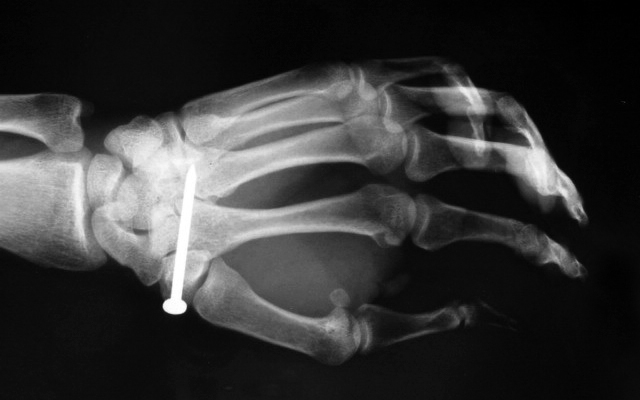
You don’t have permission to view the content

Published in WIRED issue 78/September 2025 by Fencing Contractors Association NZ
You may also like: Digital marketing that works
Read WIRED online
Follow us on Facebook
© Fencing Contractors Association NZ (FCANZ)
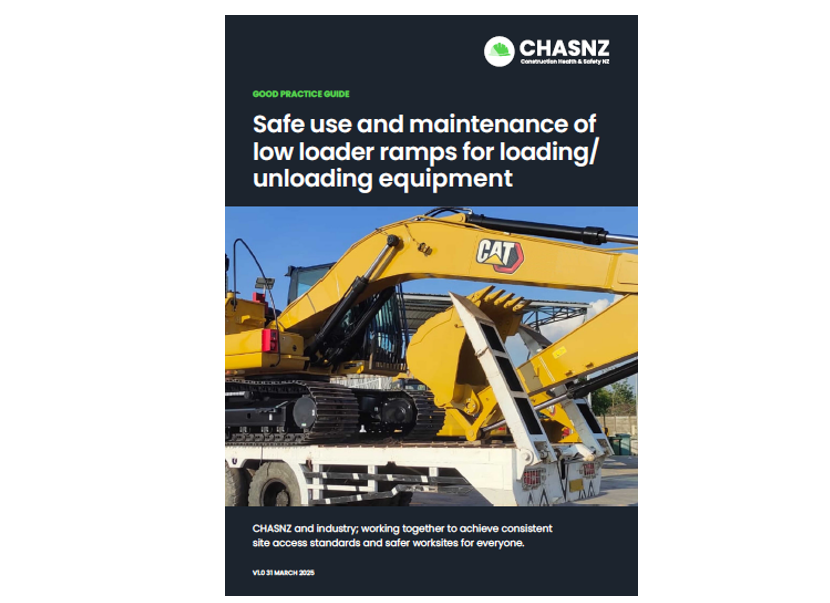
In New Zealand’s construction and infrastructure sectors, the use of low-loader trailers is routine – but the risks they pose are anything but ordinary.
Ramp-related incidents have led to serious injuries and fatalities, often stemming from uncontrolled drops, hydraulic failures, or poor maintenance practices. To address these high-energy hazards, Construction Health and Safety New Zealand (CHASNZ), in collaboration with industry leaders and WorkSafe NZ, has released the Good Practice Guide for Low-Loader Ramps. This comprehensive resource offers practical, evidence-based strategies to eliminate or minimize risks during the loading and unloading of heavy machinery.
Designed for owners, operators, maintainers, and designers, the guide aligns with the Health and Safety at Work Act 2015 and introduces Energy-Based Safety principles to tackle hazards exceeding 1,500 joules. Whether you’re a PCBU looking to implement direct controls like double-acting rams, or seeking alternative measures such as trained spotters, this guide empowers you to make informed, safety-first decisions. It’s not just a document – it’s a blueprint for safer worksites across Aotearoa, and well worth a read.
Published in WIRED issue 78/September 2025 by Fencing Contractors Association NZ
You may also like: Tractor safety on roads
Read WIRED online
Follow us on Facebook
© Fencing Contractors Association NZ (FCANZ)

You don’t have permission to view the content

As a tradie in New Zealand, chances are most of your business comes from word of mouth. A mate recommends you, a neighbour remembers your sign at the gate, or someone calls because they saw you out on the job. It’s simple and it works – but what if you could take that word of mouth and give it unlimited reach?
That’s where digital marketing comes in, and I’m not talking about expensive, fancy campaigns. I’m talking about simple strategic marketing that works for real businesses like yours, without draining your time or budget.
Branding might sound corporate, but it’s just how people’s brains work to recognise you. If your logo, colours, and style match across your signs, shirts, Facebook, and website, you start to stick in people’s minds.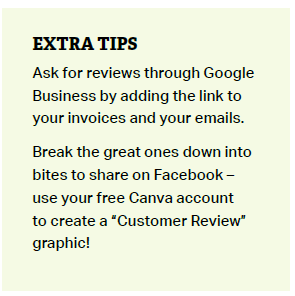
Think of branding like a good fence line: when everything’s straight, strong, and tidy, people trust it. When it’s all over the place, they don’t.
Even if you’re a new business, invest in a clear logo and simple design that you can use everywhere. If you look professional, people assume your work is too. Think about colours and the font you choose, as they all convey ideas about your business.
I’ve worked with dozens of rural and trade-based businesses, and I’ve seen one thing time and time again: when you look professional, and you show up consistently online and offline, you build trust – it’s trust that gets you the job!
There is a reason that big businesses spend millions on branding.
You might think, “I’ve got enough work, I don’t need marketing.” That might be true now, but what about next season? Or when you want to grow?
Your online presence means people can find you 24/7. It builds trust before they even meet you. Even in rural New Zealand, people Google before they call. Think of your Google Business listing, website, and Facebook page as a digital handshake. If they look good, people feel confident hiring you.
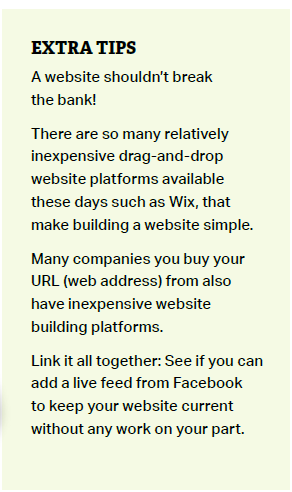
If you’re not on Google Business, you’re missing a huge opportunity. It’s free and helps you show up when people Google “fencers near me.”
How to set it up:
This also puts you on Google Maps, making it easier for locals to find and trust you.
A website is your digital shop front. It’s where people go to check you out before calling you. 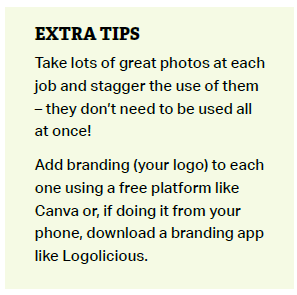
You don’t need a flashy site, just one that works, is SEO and mobile optimised, and is user-friendly.
A good website should:
Even a one-page site can work if it’s professional and easy to navigate.
Social media is different from print media because it’s ongoing and shareable. One good post can reach far beyond your town for free. You don’t need a huge following – just consistency. Post your latest job, a before-and-after shot, or a tip about fencing care, and suddenly you’re the name people remember.
Social also gives feedback. On Facebook, you can see who’s clicking, liking, or messaging you. With print, you never really know who’s reading it, making it difficult to monitor success and adapt future marketing efforts.
If you only do one thing after reading this article, let it be setting up your Facebook business page properly. It’s free, easy, and it’s where most of your potential clients will look first.
Here’s what to check:
Social media doesn’t have to be hard. Here’s what works:
Carissa Marsh
![]()
Published in WIRED issue 78/September 2025 by Fencing Contractors Association NZ
You may also like: How can I work smarter not harder in my business?!
Read WIRED online
Follow us on Facebook
© Fencing Contractors Association NZ (FCANZ)

A quad bike rollover, which cost a Tararua farmhand his life, could have been avoided if the farm manager had kept the bike in good working order, WorkSafe New Zealand says.
Worn brakes, uneven tyre pressure, and poor suspension were among the defects found on the bike that flipped at low speed and killed 31-year-old Ethen Payne at an Eketahuna dairy farm in November 2022.
The bike was purchased second-hand and had no crush protection device installed. The farm manager and bike owner, Dane Hemphill, has now been sentenced for health and safety failures uncovered by a WorkSafe investigation. A victim impact statement read in court said Mr Payne’s mother has since died of a broken heart.
“This tragedy should be the lightning rod the agriculture sector needs to up its game on quad bike safety,” says WorkSafe’s central regional manager, Nigel Formosa.
“First and foremost, WorkSafe strongly recommends installing a crush protection device on the back of a quad bike.”
Pre-start checks are important, primarily to check tyre pressure and brake function before setting off.
Regular servicing in line with the manufacturer’s recommendation is also a must. This may include oil changes and filter replacements. A checklist can be handy to document the frequency of servicing, what was looked at, and any fixes undertaken.
Any issues identified during pre start checks or servicing should be addressed promptly to avoid further problems or potential hazards.
“We know life is busy for farmers, but there’s no excuse for letting your quad bike maintenance slide – especially when the consequences can be catastrophic. Ideally maintenance checks are done by a mechanic. If you are too busy to take your quad bikes in for a service, arrange for a mobile mechanic to come out to you. The cost is nothing compared to having a preventable death on your conscience,” says Nigel Formosa.
WorkSafe Media Release, 1 May 2025
Published in WIRED issue 77/June 2025 by Fencing Contractors Association NZ
You may also like: Health and safety pre-start for plant and machinery
Read WIRED online
Follow us on Facebook
© Fencing Contractors Association NZ (FCANZ)

You can’t get more time. But you can make yourself use it better. Business coach Daniel Fitzpatrick from Next Level Tradie explains how.
If you’re like most tradies, you’re so busy you can barely catch a breath right now. Make hay while the sun shines. I couldn’t agree more.
But there’s one small catch: Avoiding burnout is paramount. For you, your family, your team, and for the success of your company.
Sucking it up “to just get through the next big job”? Not the best plan. Why? Because there’s always another “next big job” around the corner.
To stay on your game, handle the curveballs of this ‘new normal’, maintain strong margins and profits (and still have family time), you’re going to need tried-and-true strategies that work in the real world.
You’ll need to get a better handle on managing your time.
Here are three of my favourite insights:
Heard of the 80/20 law? Here’s how it works:
Same with your time: 80% of results come from 20% of the efforts.
In 8 hours at work, you’ll find that less than 2 hours of your time is spent on tasks that make a real difference.
Take a look at your week. What are the things that move the needle?
Profit-generating tasks might be: speaking with key clients; negotiating deals; organising your team; staff training and keeping standards high; setting targets with your team; working on profitability; hiring; streamlining systems so things happen without you being involved every step of the way… and so on.
It’s very easy to get caught up in the wrong things. Fires and squeaky wheels distract you from what you should be doing. This can leave you shattered week after week. Chasing your tail. Frustrated that there is no time left to make the business better. No time left to get the important stuff done.
Instead of reacting to the demands of the day, step back. Just for a moment.
Don’t let other people’s priorities dominate your day.
Identify the 20% of tasks on your plate that drive results – things that move you closer to your goals.
Here’s how: grab a piece of paper. On the left, list all your daily and weekly activities. On the right, write down your recent wins. Then draw a line to connect your wins to tasks directly responsible for making them happen. Then you’ll know exactly where to focus your efforts.
Start each day by jotting down your top 3 tasks. Do the most important or hardest one first – minimise interruptions during this time.
Remember: you can’t do it all anyway. So you’re going to have to choose. Be strategic and intentional about how you spend your time. And you’ll be way ahead.
As a skilled professional, you probably think it’s crazy when a homeowner wants to DIY. It’s stressful. It takes longer. And the quality isn’t nearly as good.
But here’s something really interesting:
Most of us DIY stuff inside our own business. All the time.
I’ll tell you what though. Just because you can do something doesn’t mean you should.
Let’s be honest: The bulk of your time is probably spent on stuff you could pay someone else $30/hour (or less) to do.
Did you know using your money to free up your time actually makes you happier?
A study by University of British Columbia found people felt happier when they spent money on a time-saving purchase, rather than a material one.
People who invested in time-saving services (such as house cleaning, grocery/meal delivery, lawn mowing, errands, childcare) reported higher levels of satisfaction with life.
This was true regardless of income level, even when participants had very little disposable cash.
Let’s apply this to business. Take another look at your to-do list. Ask: does this task need to be done? For real? Does it need to be done by me? Who else could do this?
Could you outsource, employ an admin person, a foreman, or an extra pair of hands on the tools?
Do you need to be: answering the phone 24/7 (dealing with the tyrekickers)? Wrestling paperwork, doing all the bookkeeping (invoicing, following up late payers, handling payroll)? Fiddling around sorting out IT issues, or wasting 40 minutes fixing the printer? Manning social media?
Running out to collect materials for jobs (could you pay for delivery?).
Don’t get me wrong. Delegating is not just about handing work over – but also checking in to ensure it’s done to the same high standards you expect.
Letting go is easier than you think. But having the confidence to let go – staying in control – happens by putting in place standards and systems, so you can trust that your team will get it done right.
Don’t forget to consider what you can automate. Bad systems cost you time and make your life harder. You might invest in apps so you can get paid on the spot, log timesheets, use GPS, or project management software for job tracking, and to keep clients updated/ get the same information out to everyone in real time.
Ever swore you couldn’t possibly fit one more task into your busy day, then something urgent cropped up, and somehow you still got everything done?
Weird, right? When push came to shove, you did have time.
The secret is, for the most part, things get done when they need to get done.
It’s Parkinson’s law: work expands to fill the time available for its completion.
In other words, time is elastic. That’s why we often get more done when we have less time to do it. We fit the task to the timeframe.
Try it: set yourself deadlines. Shorten the allocated time.
Here’s another clue: “My #1 productivity hack is understanding the difference between “doing” and “done”. When you shift your focus from what you are going to be “doing” in a given time period, to what you are going to get “done”, your productivity skyrockets.” – Dr Sam Hazledine.
By now, you’ll be wondering: Can I use this idea with my team? Heck yes!
Give your crew set targets for when you expect the job to be completed by. How many hours are allocated on fixed price jobs before you start eating away at profit? Break it down to each stage to stay on track.
Sure, sometimes things take longer, and delays are unavoidable. But I can almost guarantee that if you adjust expectations and set targets, you’ll shave significant time off each job.
A drainlayer I worked with would book inspections on jobs before they were complete. When they didn’t, jobs would take 2.5 days instead of the usual 2. Staff productivity increased when “gotta get it done, because the inspector is turning up on Friday” was in play. Interesting, isn’t it?
A word of caution: Ideas are useless without execution. Yet to get results, you don’t have to implement every idea that comes along. Just the ones that make the most difference.
You can have your nights and weekends back and a highly successful business. My clients have achieved this and so can you.
Like the idea of getting some support and accountability to be the best version of yourself as a business owner? Book a free call with me. It’s a zero-pressure chat to see if private 1 on 1 mentoring might be right for you.
Go here and book a time now: nextleveltradie.co.nz/nextstep/
Written by Daniel Fitzpatrick, Business Coach, Next Level Tradie

Published in WIRED issue 77/June 2025 by Fencing Contractors Association NZ
You may also like: 4 mindsets that separate successful business owners from the rest
Read WIRED online
Follow us on Facebook
© Fencing Contractors Association NZ (FCANZ)

There is a general common law presumption that family members who enter into an agreement do not intend to
create legal relations.
But how does this presumption play out in the employment jurisdiction, especially in situations where an individual finds themselves in an informal arrangement to perform work for a family member’s business?
Recent case law highlights the difficulties which can come from such informal familial arrangements, and why having a soundly constructed agreement is important even when doing work for a close and trusted relative. This lesson may be particularly important in New Zealand, where approximately 97% of our businesses have fewer than 20 employees. Many of these small businesses are likely to be family businesses.
Defining the working relationship
The main issue likely to arise in the context of an informal familial working arrangement is whether there is an employment relationship between the individual performing the work and the person for whom they are working. A workers’ employment status is important as there must be an employment relationship for a worker to be afforded many of the statutory rights available under the Employment Relations Act 2000 and Holidays Act 2003, such as the right to the minimum wage, leave and the ability to pursue a personal grievance.
In Dillon v Tullycrine Ltd [2020] NZEmpC 52, Mr Dillon claimed unpaid wages from Tullycrine, a company owned and operated by Mr Dillon’s son, Hayden, and daughter-in-law, Lisa. In 2010, Hayden, Lisa, Mr Dillon and Mrs Dillon agreed to purchase a farm to run as an agistment business, whereby customers paid to have their livestock grazed and fed on the farm. It was agreed that Hayden and Lisa would provide the funding and Mr Dillon would be responsible for the day-to day running of the farm.
In determining whether the arrangement gave rise to an employment relationship, the Employment Court noted the general presumption against an intention to create legal relations in family arrangements. However, it also confirmed that a family context does not preclude a finding of employment and noted that there are circumstances where one member of a family is vulnerable to exploitation by virtue of the family relationship. Accordingly, each case needs to be carefully considered in context and on its own facts.
The Court held that the arrangement did not give rise to an employment relationship. While Hayden and Lisa principally dealt with the management and financials, and Mr Dillon with the running of the farm, the usual control an employer would be expected to have over an employee was not present. At all material times, the arrangement was based on their familial relationship with the hope that the business would be successful to everyone’s benefit.
Conversely, in McKay v Wanaka Pharmacy Ltd [2020] ERA 230, the Employment Relations Authority (the Authority) found there was an employment relationship in the context of a familial working arrangement. In this case, Ms McKay performed a range of work for a newspaper company and a pharmaceutical company, both owned and operated by her husband, Mr Heath. This work included answering phone calls which were directed to her mobile, uploading the newspaper to the website, managing social media accounts, assisting with recruitment, taking charge of rostering and taking photos for the newspaper. There was no employment agreement between the couple and these tasks were mainly performed remotely around Ms McKay’s family commitments to her three sons.
When the couple split, Ms McKay raised a personal grievance for unjustified dismissal after being informed she would no longer be working for the companies. While Ms McKay was being paid for the work she undertook, Mr Heath claimed the payments were set up as a way of “income splitting” for tax purposes and argued that Ms McKay was not an employee because of the matrimonial relationship between the pair. However, the Authority referenced Tullycrine in noting that a family context does not preclude a finding of employment, and each case needs to be considered on its facts. In this case, the Authority applied the control, integration and fundamental tests to determine Ms McKay was an employee despite the matrimonial relationship with her husband. She had therefore been unjustifiably dismissed.
Another issue which may arise in the context of informal family working arrangements is determining the amount of holiday pay due and owing on termination where it is determined that a worker has been an employee, but no record of holidays taken has been kept.
The Employment Court dealt squarely with this issue in McKay v Wanaka Pharmacy [2021] NZEmpC 112. Following the Authority’s determination that Ms McKay had been an employee for 13 years, but not had these holidays deducted from her holiday entitlements, the Court had the difficult task of determining her holiday pay entitlements on termination. This required the Court to figure out how many holidays Ms McKay had taken over this period – a challenging factual assessment to make several years after many of the holidays in question. The Court dealt with conflicting accounts from Ms McKay and Mr Heath as to how many trips away Ms McKay had taken. It then turned to consider the equally challenging question of whether and how much Ms McKay worked during her holidays, and how this affected her rights under the Holidays Act 2003. Coming to the conclusion that Ms McKay was required to work about 10% of each week she was on holiday, the Court credited this time to Ms McKay.
Ultimately, the Court determined that Ms McKay was entitled to 34.25 weeks’ holiday pay, being the difference between the accrued holiday entitlement figure in the payroll system and the holidays Ms McKay had taken. At the rate of $1208.12 per week, Ms Heath was required to pay Ms McKay a gross payment of $41,378.11 plus interest.
Employers cannot rely on a familial relationship to argue that a working arrangement is not an employment relationship. The common law presumption against an intention to form legal relations with family members derives from an English contract law case. While this presumption is recognised by the New Zealand employment institutions, the Employment Court has made it clear that intention is not the only factor to be considered when determining whether the true nature of the parties’ relationship was one of employment. The courts will continue to apply the well-established common law tests of control, integration and the fundamental test to the facts to determine whether there is an employment relationship, so that a family context will not preclude a finding of employment.
It is therefore important to consider the true nature of any working arrangement (including those involving family members) prior to its commencement and put in place a sound and legally compliant employment agreement which reflects this. While a party’s statement as to the nature of their relationship is not conclusive, reflecting on the working arrangement in advance will minimise the likelihood of an unexpected declaration that a worker has always been an employee. Such a declaration can see the employer slapped with an order to pay a hefty sum towards unpaid entitlements under the Holidays Act or Employment Relations Act, and open the employer up to unexpected personal grievance claims.
If you have any questions about the nature of your working arrangements or meeting your obligations as an employer, feel free to reach out to our national employment team.
Rosie Judd – Senior Associate, Wynn Williams Dispute Resolution Team (Employment)
Angela Black – Law Clerk, Wynn Williams Dispute Resolution Team (Employment)
Article republished with permission from
wynnwilliams.co.nz
You may also like: How to use a 90-day trial period legally
Read WIRED online
Follow us on Facebook
© Fencing Contractors Association NZ (FCANZ)

Ensuring health and safety in the fencing business is crucial, especially when dealing with plant and machinery. A well-structured pre-start process can help identify potential hazards, ensure equipment is in good working order, and protect workers from injury. By adhering to these guidelines, fencing businesses can ensure the safety and well-being of their workers while maintaining efficient and compliant operations.
1. Pre-start Meeting
Before starting any work, conduct a pre-start meeting with all team members. This meeting should cover:
2. Equipment Inspection
Inspect all plant and machinery before use. This includes:
3. Hazard Identification
Identify and assess potential hazards associated with the use of plant and machinery. Common hazards in the fencing business include:
4. Risk Assessment
Conduct a risk assessment to evaluate the likelihood and severity of identified hazards. Use the following steps:
5. Training and Competence
Ensure all workers are trained and competent in the use of plant and machinery. This includes:
6. Personal Protective Equipment (PPE)
Provide and enforce the use of appropriate PPE, including:
7. Emergency Procedures
Establish and communicate emergency procedures, including:
8. Documentation and Reporting
Keep detailed records of all pre-start checks, training, and incidents. This includes:
9. Ensuring New or Modified Plant and Machinery Have Risk Assessment and Training
When introducing new or modified plant and machinery, it is essential to conduct a thorough risk assessment and provide adequate training for safe operation. Here’s how to ensure this process is effectively managed:
Risk Assessment for New or Modified Equipment
Training for Safe Operation
10. Ensuring Competency for Use of Plant and Machinery
Ensuring that all operators are competent in the use of plant and machinery is critical for safety and efficiency. Here’s how to manage this:
Competency Assessment
Training and Development
11. Keeping Maintenance Records
Maintaining detailed records of all maintenance activities is essential for ensuring the longevity and safety of plant and machinery. Here’s how to manage maintenance records effectively:
Maintenance Log
Benefits of Maintenance Records
In addition to the guidelines mentioned above, here are some specific regulations and requirements from WorkSafe New Zealand that are relevant to the fencing business:
1. Health and Safety at Work Act 2015 (HSWA)
2. Health and Safety at Work (General Risk and Workplace Management) Regulations 2016
3. Health and Safety at Work (Hazardous Substances) Regulations 2017
4. WorkSafe Guidelines for the Provision of Facilities and General Safety in the Construction Industry
5. Workplace and Facilities Requirements
By adhering to these regulations, fencing businesses can ensure they are providing a safe working environment and protecting their workers from potential hazards.
In conclusion, maintaining our equipment is crucial for ensuring the safety and efficiency of our rural operations. By keeping detailed maintenance logs and addressing repairs promptly, we can prevent downtime and extend the lifespan of our tools. Let’s continue to prioritise safety and diligence in our daily tasks.
Together, we can achieve a productive and successful fencing season. Stay safe and keep up the great work!
Best regards,
Deb and the RuralSafe Team

Published in WIRED issue 76/March 2025 by Fencing Contractors Association NZ
You may also like: Health & Safety News
Read WIRED online
Follow us on Facebook
© Fencing Contractors Association NZ (FCANZ)